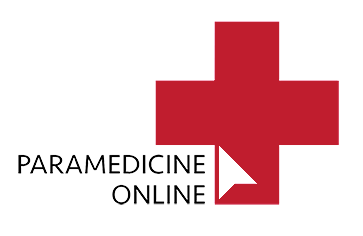Diploma overview
A brief explanation of the tasks and activities associated with the Diploma of Paramedical Science curriculum.
Everyday actions and expectations of an emergency health care professional.
During a typical working day as a Paramedic, you’ll be expected to:
Understand, respond, manage, maintain, enhance, secure, ensure, effective, make safe, communicate, support, follow, lead, leadership, influence, supervise, work, provide, prioritise, participate , load, unload and drive, focus, conduct, deliver, checking , anticipate, coordinate and prevent etc. These are action words, or commonly referred to as verbs.
The above examples can be found in the qualification summary of job expectations.
- Understand and respond to instructions; to carry out routine tasks and communicate with a range of internal/external clients in a medical environment; as well as use appropriate medical terminology.
- Follow organisational infection prevention and control procedures, including implementing standard and transmission-based precautions and responding to infection risks.
- Obtain and interpret information about client health status and to check a client’s physical health. It requires a detailed knowledge of anatomy and physiology.
- Participate in safe work practices to ensure their own health and safety, and that of others in work environments that involve caring directly for clients. It has a focus on maintaining safety of the worker, the people being supported and other community members.
- Effectively communicate with patients, colleagues and health providers in complex situations using verbal and non-verbal interactions. It requires workers to address these significant challenges in the context of providing a health care service.
- Load, unload and drive vehicles safely to transport non-emergency patients to and from a facility or service. It includes using communication equipment and checking vehicles and equipment in order to restock and remedy faults.
- Conduct clinical assessment and deliver basic clinical care in a pre-hospital/out-of-hospital environment.
- Participate in safe work practices to ensure their own health and safety, and that of others in work environments that involve caring directly for clients. It has a focus on maintaining safety of the worker, the people being supported and other community members.
- Manage routine non-emergency situations that are not anticipated to be life-threatening to ensure safety at the scene.
- Manage procedures, provide security and communicate with other services involved with patient care at the scene of an emergency. It describes skills required in emergency situations, which may involve coordination with and by other emergency services personnel.
- Respond effectively to behaviours of concern of people. Skills are associated with handling difficult incidents rather than managing ongoing behaviour difficulties.
- Conduct clinical assessments and deliver standard patient care in the pre-hospital/out-of-hospital environment.It applies to pre-hospital/out-of-hospital health care workers. The worker provides advanced life support, prioritises clinical care, implements time-critical health care procedures and therapies, and monitors patients based on patient needs and in accordance with established clinical practice guidelines.
- Evaluate and enhance own practice through a process of reflection and ongoing professional development.
- Lead teams and individuals by modelling high standards of conduct to reflect the organisation’s standards and values. It applies to individuals who are making the transition from being a team member to taking responsibility for the work and performance of others and providing the first level of leadership within the organisation. These managers have a strong influence on the work culture, values and ethics of the teams they supervise.
- Identify and work within the legal and ethical frameworks that apply to an individual job role.
- Work respectfully with people from diverse social and cultural groups and situations, including Aboriginal and/or Torres Strait Islander people.
- Maintain health and well-being by preventing and managing personal stress. This unit applies to work in a range of health and community services settings, in particular work roles that operate in high stress situations and circumstances.
Tasks associated with the role of a Diploma of Paramedical Science prehospital health care specialist.
Here at Paramedicine Online, our goal is to take complicated learning and make it easy for you to understand.
What we have done here, is to highlight the ‘Elements’ contained in the 17 units of the HLT51015 – Diploma of Paramedical Science qualifications.
To make it even easier to understand. If we had to explain what an ‘Element’ is; think of it as a task you will be required to perform as part of your work day as a emergency response officer.
An Element = a Task
There are 17 units of competency in the HLT51015 – Diploma of Paramedical Science, containing 65 tasks you are expected to be able to perform.
Industries, such as emergency health, or prehospital and out-of-hospital response are reliant on industry skills councils who work together with Ambulance Services and other providers of emergency health care to ensure what is being taught, is relevant to the changing needs of the workplace/industry. For instance, you may be aware of the increase in mental health associated calls to emergency services. Ambulance officers require training to cope with the demands of working with patients suffering a mental health issue.
65 tasks in this diploma
- Respond appropriately to instructions which contain medical terminology
- Carry out routine tasks
- Use appropriate medical terminology in oral and written communication
- Follow standard and additional precautions for infection prevention and control
- Identify infection hazards and assess risks
- Follow procedures for managing risks associated with specific hazards
- Obtain information about physical health status
- Check physical health status
- Identify variations from normal physical health status
- Follow safe work practices for direct client care
- Follow safe work practices for manual handling
- Follow safe work practices for infection control
- Contribute to safe work practices in the workplace
- Reflect on own safe work practices
- Communicate with patients and/or colleagues
- Use effective communication techniques
- Convey and receive information using available modes of communication
- Promote a positive public profile
- Prepare and check vehicle and equipment
- Ensure faults in vehicle and equipment are remedied
- Convey and receive information using necessary modes of communication
- Load, unload and secure non-emergency patient and other specific personnel for transportation
- Drive vehicle
- Make initial incident and patient assessment
- Plan basic pre-hospital/out-of-hospital patient care
- Implement basic patient care procedures
- Monitor basic patient care and modify as required
- Handover patient to a healthcare facility
- Follow safe work practices for direct client care
- Follow safe work practices for manual handling
- Follow safe work practices for infection control
- Contribute to safe work practices in the workplace
- Reflect on own safe work practices
- Attend non-emergency scene
- Take appropriate measures to ensure safety at the scene
- Assess the environment to identify real and potential hazards
- Communicate with those involved in the incident
- Control hazards
- Establish relationships and lines of communication with other services and network
- Evaluate the emergency scene environment
- Identify behaviour and plan response
- Apply response
- Report and review incidents
- Perform pre-hospital/out-of-hospital patient assessment
- Identify variations in physical health status
- Plan pre-hospital/out-of-hospital patient care
- Implement pre-hospital/out-of-hospital patient care procedures
- Monitor and evaluate pre-hospital/out-of-hospital patient care
- Hand over patient requiring pre-hospital/out-of-hospital patient care to receiving facility
- Reflect on own practice
- Enhance own practice
- Facilitate ongoing professional development
- Model high standards of management performance and behaviour
- Enhance organisation’s image
- Make informed decisions
- Identify and respond to legal requirements
- Identify and meet ethical responsibilities
- Contribute to workplace improvements
- Reflect on own perspectives
- Appreciate diversity and inclusiveness, and their benefits
- Communicate with people from diverse backgrounds and situations
- Promote understanding across diverse groups
- Develop strategies to manage personal stress
- Implement stress management strategies
- Evaluate stress reducing strategies
Summary of Units of Competency – HLT51015 – Diploma of Paramedical Science
BSBMED301 – Interpret and apply medical terminology appropriately
This unit describes the skills and knowledge required to understand and respond to instructions; to carry out routine tasks and communicate with a range of internal/external clients in a medical environment; as well as use appropriate medical terminology.
- Respond appropriately to instructions which contain medical terminology
- Carry out routine tasks
- Use appropriate medical terminology in oral and written communication
HLTINF001 – Comply with infection prevention and control policies and procedures
- Follow standard and additional precautions for infection prevention and control
- Identify infection hazards and assess risks
- Follow procedures for managing risks associated with specific hazards
HLTAAP002 – Confirm Physical Health Status
- Obtain information about physical health status
- Check physical health status
- Identify variations from normal physical health status
HLTWHS002 – Follow Safe Work Practices for Direct Client Care
- Follow safe work practices for direct client care
- Follow safe work practices for manual handling
- Follow safe work practices for infection control
- Contribute to safe work practices in the workplace
- Reflect on own safe work practices
HLTAMB012 – Communicate in Complex Situations to Support Health Care
- Communicate with patients and/or colleagues
- Use effective communication techniques
- Convey and receive information using available modes of communication
- Promote a positive public profile
HLTAMB014 – Transport Non-Emergency Patients under Operational Conditions
- Prepare and check vehicle and equipment
- Ensure faults in vehicle and equipment are remedied
- Convey and receive information using necessary modes of communication
- Load, unload and secure non-emergency patient and other specific personnel for transportation
- Drive vehicle
HLTAMB007 – Assess and Deliver Basic Clinical Care
- Make initial incident and patient assessment
- Plan basic pre-hospital/out-of-hospital patient care
- Implement basic patient care procedures
- Monitor basic patient care and modify as required
- Handover patient to a healthcare facility
HLTWHS002 – Follow Safe Work Practices for Direct Client Care
- Follow safe work practices for direct client care
- Follow safe work practices for manual handling
- Follow safe work practices for infection control
- Contribute to safe work practices in the workplace
- Reflect on own safe work practices
HLTAMB011 – Manage a routine non-emergency scene
- Attend non-emergency scene
- Take appropriate measures to ensure safety at the scene
HLTAMB013 – Contribute to Managing the Scene of an Emergency
- Assess the environment to identify real and potential hazards
- Communicate with those involved in the incident
- Control hazards
- Establish relationships and lines of communication with other services and network
- Evaluate the emergency scene environment
CHCCCS020 – Respond Effectively to Behaviours of Concern
- Identify behaviour and plan response
- Apply response
- Report and review incidents
HLTAMB008 – Assess and Deliver Standard Clinical Care
- Perform pre-hospital/out-of-hospital patient assessment
- Identify variations in physical health status
- Plan pre-hospital/out-of-hospital patient care
- Implement pre-hospital/out-of-hospital patient care procedures
- Monitor and evaluate pre-hospital/out-of-hospital patient care
- Hand over patient requiring pre-hospital/out-of-hospital patient care to receiving facility
CHCPRP003 – Reflect on and Improve Own Professional Practice
- Reflect on own practice
- Enhance own practice
- Facilitate ongoing professional development
BSBMGT401 – Show Leadership in the Workplace
- Model high standards of management performance and behaviour
- Enhance organisation’s image
- Make informed decisions
CHCLEG001 – Work legally and Ethically
- Identify and respond to legal requirements
- Identify and meet ethical responsibilities
- Contribute to workplace improvements
CHCDIV001 – Work with diverse people
- Reflect on own perspectives
- Appreciate diversity and inclusiveness, and their benefits
- Communicate with people from diverse backgrounds and situations
- Promote understanding across diverse groups
HLTWHS006 – Manage Personal Stressors in the Work Environment
- Develop strategies to manage personal stress
- Implement stress management strategies
- Evaluate stress reducing strategies


